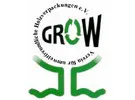More than a quarter of all wood packaging is recycled, the rest goes into sustainable bioenergy. The crates, boxes and woodchip baskets are often used several times for the healthy and environmentally friendly transport of fruit or vegetables, without resulting in quality losses. Thus, the manufacturers are meeting the requirements of the new "Act on the marketing, return and high-quality recycling of packaging" (VerpackG), which came into force in January, many times over. The law replaced the previously packaging ordinance, prescribing a minimum recycling rate of 15 percent.
Even strawberry boxes can be used multiple times. Later on, they can then be recycled into chipboard and finally into furniture.
"Packaging made of wood has always been so varied and of high quality that it can also be used several times. However, the material is not even without use after that, "explains Uwe Groll, Managing Director of the GROW Association for Environmentally Friendly Wood Packaging. This means that suppliers as well as manufacturers of wooden pallets are fulfilling the main objectives of the law, namely protection the environment and the creation of fair competition. The energetic use of wooden boards generates more energy than is used in production.
When it comes to sustainability, environmental protection and freshness/microclimate for the content, crates are almost unbeatable. In the production chain, different sized crates are made from whole poplar and beech logs originating from regional forestry offices, according to the customer's request. For the legally required traceability of the packaging, each new box receives a serial number, which ensures traceability. Thus, with every box, produce can be traced from tree to client.
The aim of the VerpackG is to ensure that companies will meet their product responsibility for packaging. Therefore, every manufacturer of consumer packaging must be registered, among others, at the central office Packaging Register LUCID. The new system creates transparency and shows which companies are fulfilling their responsibilities. For packaging made of wood, the VerpackG also stipulates a minimum recycling rate of 15 percent in accordance with the European legal target (Directive 94/62 / EC). However, according to a survey by the Federal Environmental Agency, the recycling rate of wood packaging was already at 26 percent in 2016.
Uwe Groll, Managing Director of GROW e.V., visiting Markus Benninger in his crate factory in Bundenthal.
In addition to the GROW, which represents the manufacturers, the BAV - Federal Association of Waste Wood Recycling and Recycling e.V. is committed to ensuring that the annual amount of 8 million tonnes of waste wood in Germany is recycled to a high-quality material or energy recovery. Packaging made of wood is particularly suitable for recycling. Separately collected and processed, they are a valuable secondary raw material for the wood-based panel industry to produce chipboard.
The use of waste wood for the production of sustainable products and the production of climate-friendly energy saves 5.8 million tonnes of CO2 annually in Germany.
For more information:
Uwe Groll
GROW Verein für umweltfreundliche Holzverpackungen
Hauptstraße 98
D-67133 Maxdorf
Tel. +49 637 9295 93
E-Mail: info@grow-deutschland.de
Web: www.grow-deutschland.de
